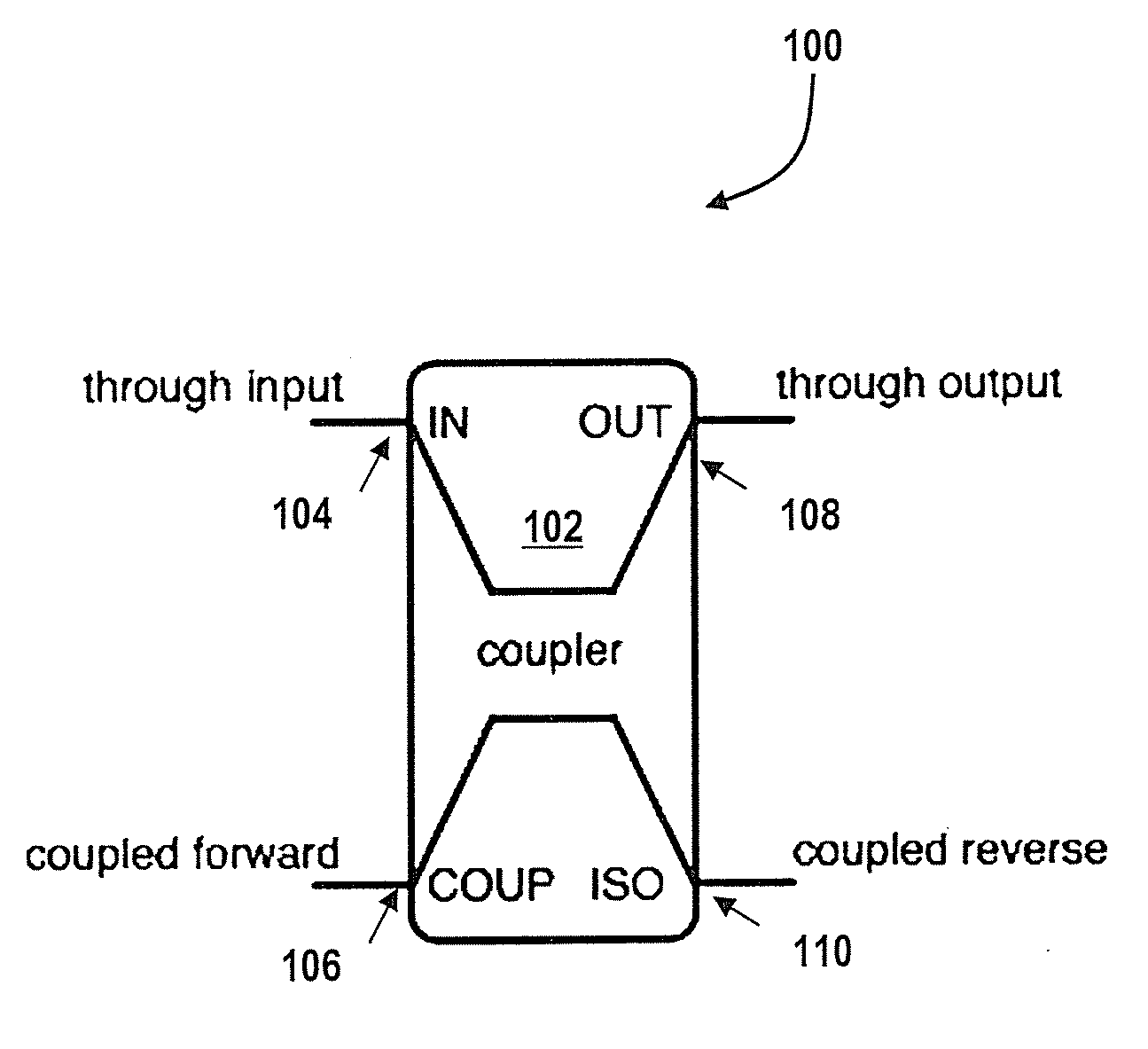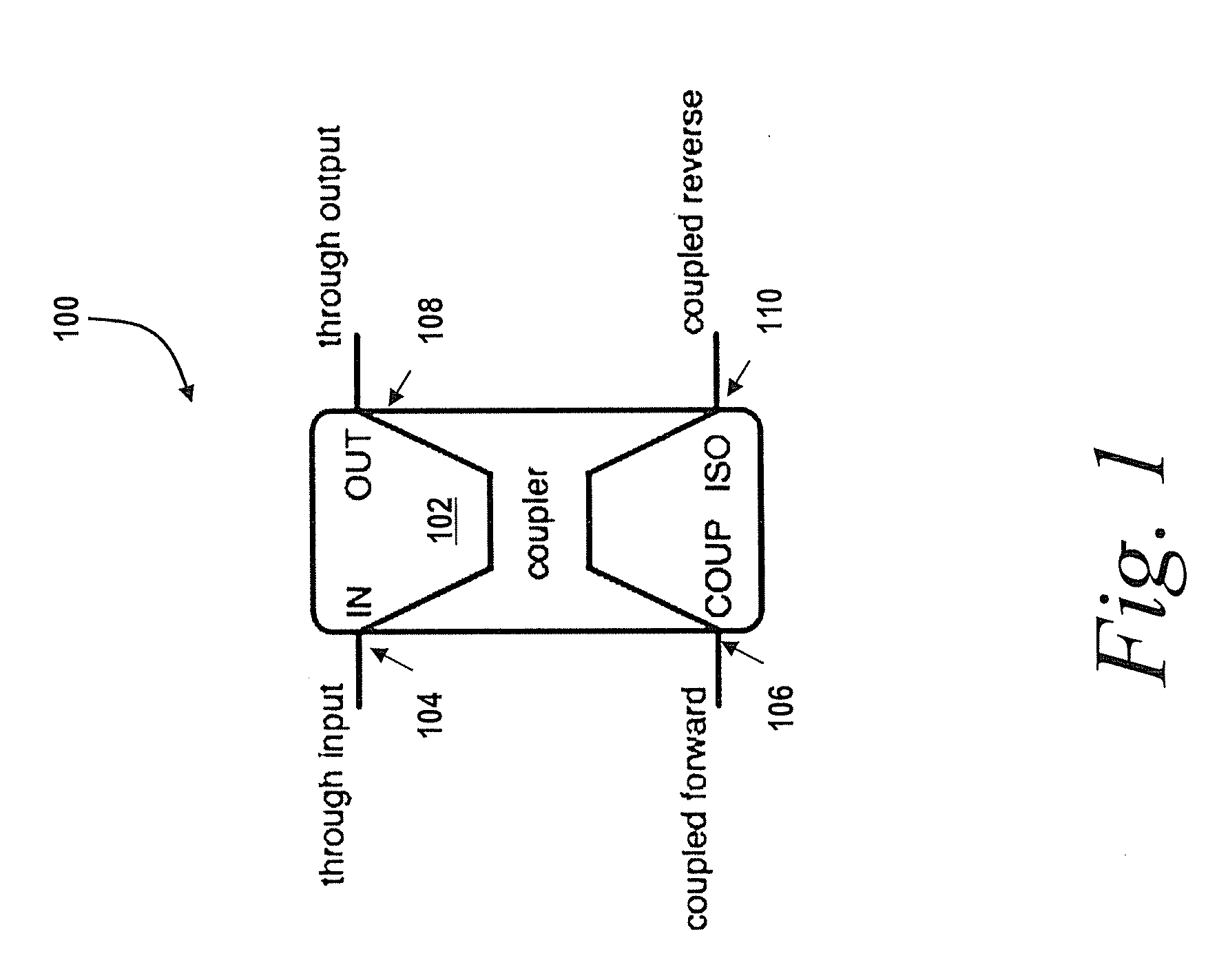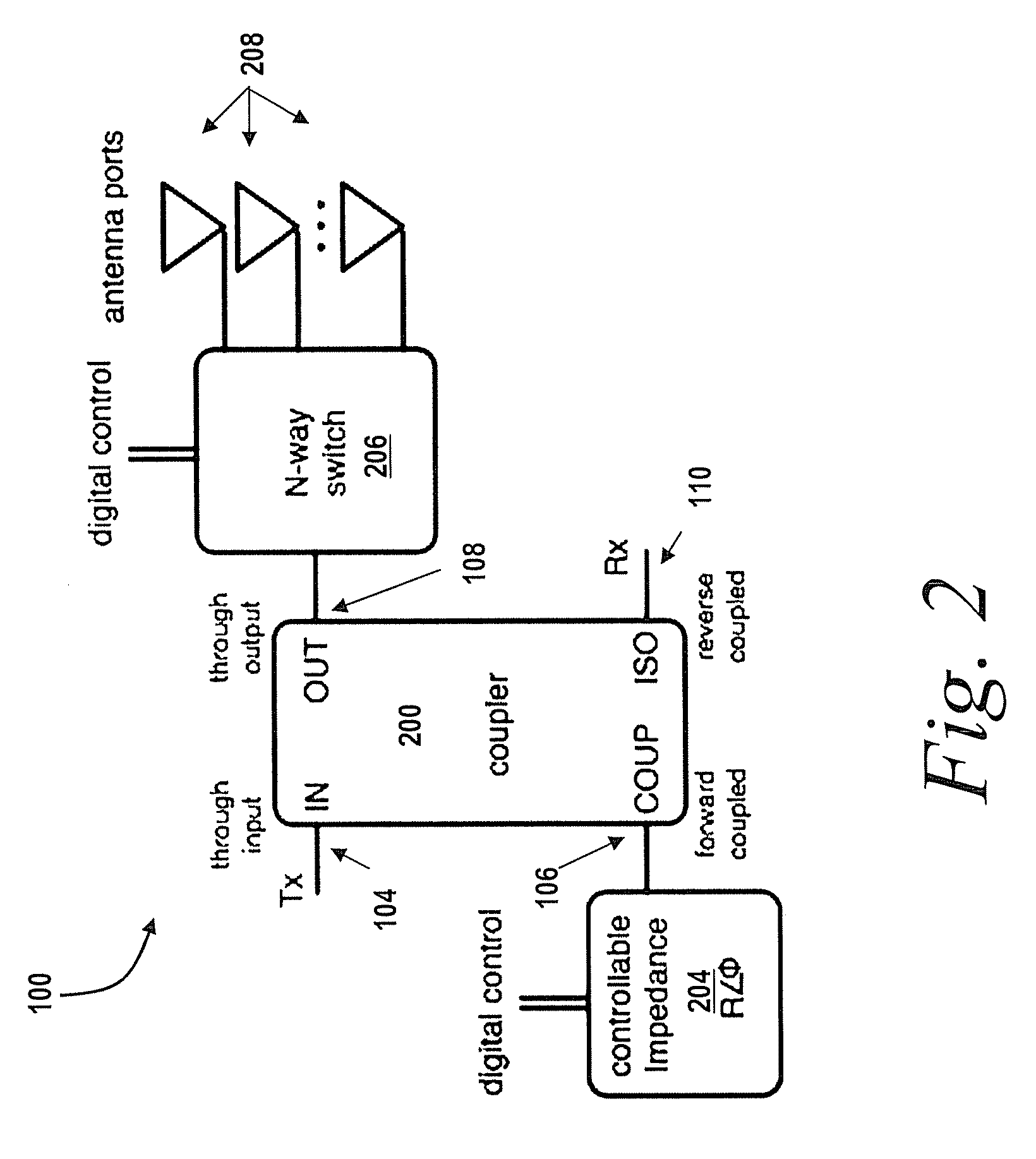Methods and Apparatus For Self-Jamming Suppression In A Radio Frequency Identification (RFID) Reader
- Summary
- Abstract
- Description
- Claims
- Application Information
AI Technical Summary
Benefits of technology
Problems solved by technology
Method used
Image
Examples
Embodiment Construction
[0022]Referring now to FIG. 1, an isolation circuit 100 is shown and described. In one embodiment, the isolation circuit 100 is a transmitter-receiver isolation circuit that is based on a single directional coupler 102. A directional coupler is a device that preferentially couples signals to different output ports depending on the direction of travel of signals through the main path of the directional coupler. In a specific embodiment, the isolation circuit 100 includes a directional coupler with the coupling among the two output ports relative to the direction of travel of signals along the main path of the directional coupler.
[0023]In a well known configuration of an RFID reader, a directional coupler's “through input” port 104 is typically connected to the RFID reader's transmitter. The “through output” port 108 is typically connected to an antenna (not shown). The “coupled forward” port 106 is typically terminated in a matched load resistance (not shown), for example a 50-ohm re...
PUM
 Login to View More
Login to View More Abstract
Description
Claims
Application Information
 Login to View More
Login to View More - R&D
- Intellectual Property
- Life Sciences
- Materials
- Tech Scout
- Unparalleled Data Quality
- Higher Quality Content
- 60% Fewer Hallucinations
Browse by: Latest US Patents, China's latest patents, Technical Efficacy Thesaurus, Application Domain, Technology Topic, Popular Technical Reports.
© 2025 PatSnap. All rights reserved.Legal|Privacy policy|Modern Slavery Act Transparency Statement|Sitemap|About US| Contact US: help@patsnap.com



